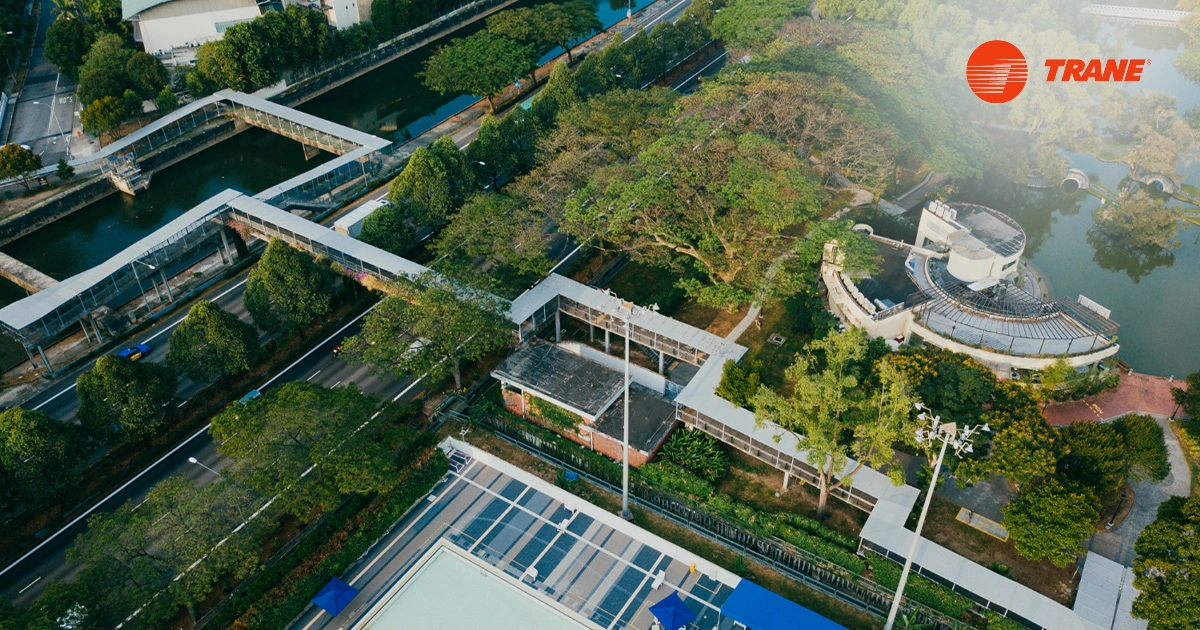As urban centers expand, the demand for sustainable, reliable, and large-scale cooling solutions continues to grow. From business districts to residential communities, cooling is not only a matter of comfort but also a foundation for productivity, safety, and economic vitality. In this context, the district cooling system has emerged as a transformative technology that redefines how modern cities manage energy, environmental responsibility, and operational efficiency.
Urbanization and the Cooling Challenge
The global trend toward urbanization is accelerating, with billions of people expected to live in cities by 2050. Rising populations increase the need for energy-intensive infrastructure, particularly in regions where hot climates dominate daily life. Conventional cooling solutions, while effective at a small scale, often struggle to deliver cost-effective, reliable results across dense urban environments. District-scale systems address this challenge by consolidating cooling into a centralized network that distributes chilled water to multiple buildings, ensuring efficiency at scale.
How District Cooling Creates Value
The district cooling system offers significant advantages over traditional air-conditioning methods. By centralizing production and distribution, it eliminates the inefficiencies of individual systems. This consolidation reduces overall energy consumption, lowers operating costs, and minimizes maintenance burdens for building owners. For cities, it enhances resilience by delivering dependable performance during peak demand periods, supporting both commercial and residential sectors simultaneously.
Sustainability as a Cornerstone
A defining feature of district cooling is its sustainability profile. The system reduces greenhouse gas emissions by cutting energy use, aligning perfectly with global efforts to combat climate change. Additionally, it often incorporates renewable energy sources, thermal storage, or waste heat recovery to further minimize environmental impacts. For governments and corporations, adopting district solutions signals a clear commitment to sustainable growth and international environmental standards.
Scalability for Growing Cities
One of the strongest benefits of district-scale cooling is scalability. As new buildings rise or populations grow, systems can expand without requiring each individual site to install independent equipment. This adaptability allows cities to plan for long-term growth while ensuring infrastructure investments remain efficient and future-ready. For businesses and developers, scalability translates into predictable costs and reduced risk over the life of a project.
Technology Driving Efficiency
Modern systems are increasingly equipped with advanced digital controls that optimize performance in real time. IoT-enabled monitoring, predictive analytics, and automated adjustments allow operators to balance loads, maximize energy savings, and respond quickly to changing demand. These capabilities ensure that large-scale systems not only deliver consistent results but also adapt dynamically to urban energy patterns.
Applications Across Global Markets
District-scale solutions are gaining traction across multiple sectors worldwide:
- Commercial Districts: Large office complexes benefit from reduced operational costs and consistent comfort for tenants, supporting productivity and lease value.
- Healthcare: Hospitals require uninterrupted cooling for patients and critical equipment. Centralized systems ensure redundancy and stability.
- Residential Developments: Communities gain access to reliable, efficient cooling while avoiding the cost and space requirements of individual systems.
- Education: Universities and research centers use centralized solutions to create comfortable, energy-efficient learning environments.
These applications demonstrate that district cooling is no longer a niche option but a mainstream approach to modern urban planning.
Integrating Process Cooling in Industrial Settings
While urban centers are the primary focus, the principles of district-scale cooling also extend to industrial applications. Industries such as manufacturing, petrochemicals, and food processing require consistent, large-volume climate control. Trane integrates advanced process cooling capabilities into larger systems, enabling industrial sites to benefit from the same efficiencies and reliability as urban districts. This crossover illustrates the versatility of the technology in serving both civic and industrial needs.
Case Study: Middle East Leadership
Regions with extreme heat, such as the Middle East, have become global leaders in adopting district-scale solutions. Cities like Dubai and Doha operate some of the largest centralized networks in the world, demonstrating the feasibility and benefits of large-scale deployment. Their success stories highlight the potential for other global cities to adopt similar approaches as urban growth continues.
Building Long-Term Economic Value
Beyond sustainability, district-scale cooling delivers measurable financial benefits. Centralized systems reduce capital costs for developers, stabilize utility expenses, and enhance property values by ensuring long-term energy reliability. For governments, the ability to reduce peak power demand eases strain on electrical grids, improving resilience and lowering infrastructure costs. These combined benefits position district solutions as both a financial and environmental imperative.
Closing Thought
As global cities expand and industries modernize, the need for efficient, scalable climate control is more pressing than ever. A district cooling system provides the infrastructure backbone for sustainable urban development, balancing performance, cost-efficiency, and environmental responsibility. By integrating capabilities such as process cooling, Trane ensures that both cities and industries can thrive in a resource-conscious world. With its global expertise and proven technology, Trane is uniquely positioned to support governments, developers, and enterprises in building the resilient cities of the future.

